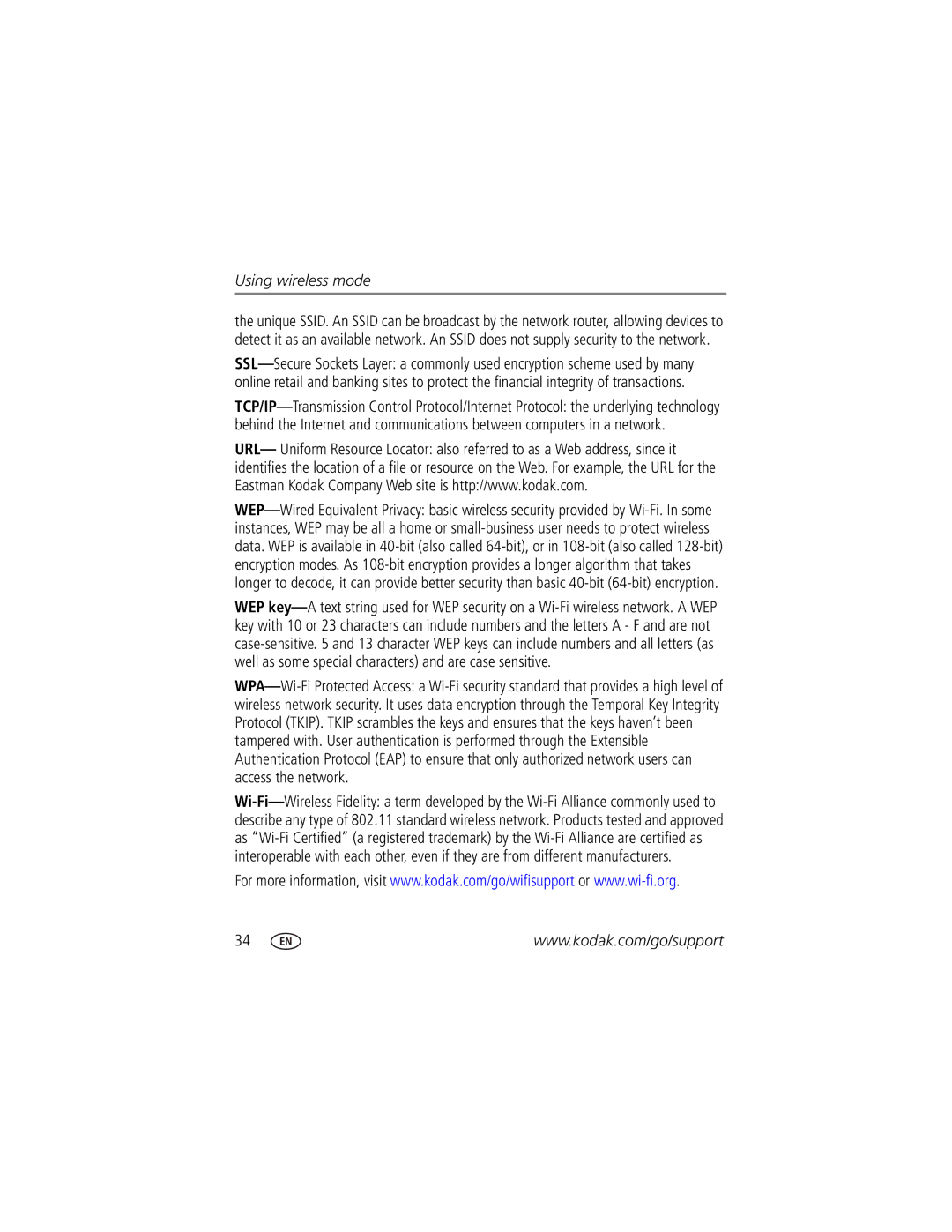Using wireless mode
the unique SSID. An SSID can be broadcast by the network router, allowing devices to detect it as an available network. An SSID does not supply security to the network.
SSL—Secure Sockets Layer: a commonly used encryption scheme used by many online retail and banking sites to protect the financial integrity of transactions.
TCP/IP—Transmission Control Protocol/Internet Protocol: the underlying technology behind the Internet and communications between computers in a network.
URL— Uniform Resource Locator: also referred to as a Web address, since it identifies the location of a file or resource on the Web. For example, the URL for the Eastman Kodak Company Web site is http://www.kodak.com.
WEP—Wired Equivalent Privacy: basic wireless security provided by Wi-Fi. In some instances, WEP may be all a home or small-business user needs to protect wireless data. WEP is available in 40-bit (also called 64-bit), or in 108-bit (also called 128-bit) encryption modes. As 108-bit encryption provides a longer algorithm that takes longer to decode, it can provide better security than basic 40-bit (64-bit) encryption.
WEP key—A text string used for WEP security on a Wi-Fi wireless network. A WEP key with 10 or 23 characters can include numbers and the letters A - F and are not case-sensitive. 5 and 13 character WEP keys can include numbers and all letters (as well as some special characters) and are case sensitive.
WPA—Wi-Fi Protected Access: a Wi-Fi security standard that provides a high level of wireless network security. It uses data encryption through the Temporal Key Integrity Protocol (TKIP). TKIP scrambles the keys and ensures that the keys haven’t been tampered with. User authentication is performed through the Extensible Authentication Protocol (EAP) to ensure that only authorized network users can access the network.
Wi-Fi—Wireless Fidelity: a term developed by the Wi-Fi Alliance commonly used to describe any type of 802.11 standard wireless network. Products tested and approved as “Wi-Fi Certified” (a registered trademark) by the Wi-Fi Alliance are certified as interoperable with each other, even if they are from different manufacturers.
For more information, visit www.kodak.com/go/wifisupport or www.wi-fi.org.
34 | www.kodak.com/go/support |

